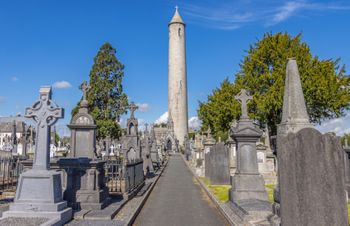
Unearthing History: Construction Uncovers Remains at Trinity College
In the heart of Dublin, Ireland, Trinity College Dublin embarked on a construction project to erect the new E3 Learning Foundry. During the excavation process, workers unearthed human remains, prompting a poignant reflection on the university’s medical past and a solemn commitment to honor those who contributed to the advancement of anatomical science. The discovery of these remains offered a unique opportunity to delve into Trinity’s rich history and recognize the individuals whose bodies served as invaluable tools for medical education in bygone eras. The remains, carefully excavated and analyzed by experts, were determined to be those of dissected cadavers, likely associated with the activities of Trinity’s 19th-century medical school, established in 1825 at the very site of the new construction. Some remains might even date back to the 18th century, linking to the practices of the older medical school that operated where the Eavan Boland Library now stands.
A Solemn Farewell: The Burial Ceremony at Glasnevin Cemetery
On February 18, 2025, a somber burial ceremony was held at Glasnevin Cemetery, a historic resting place in Dublin. Presided over by Trinity’s Chaplain, Dr. Alan Edmond O’Sullivan, the ceremony was attended by staff from the Trinity School of Medicine, archaeologists, and other professionals involved in the excavation and analysis of the remains. The remains were laid to rest in five burial plots in the St. Paul’s section of the cemetery. Dr. Denis Barry, Head of Anatomy at Trinity, delivered a moving address during the ceremony, emphasizing the significance of the discovery: “These remains, now entrusted to our care, are the remnants of real people, each with their own stories, who lived at a time when the study of anatomy was in its infancy.”
Remembering the Humanity Behind the Science
Dr. Barry’s words underscored the importance of recognizing the humanity of those whose remains were uncovered. He acknowledged the likelihood that many of these individuals came from vulnerable segments of society, their lives perhaps marginalized or forgotten. Yet, their contribution to medical knowledge was profound. Through their sacrifice, generations of medical students gained insight into the complexities of the human body, contributing to countless lives saved. The burial ceremony served as a powerful reminder of the ethical considerations surrounding the use of human remains in medical education and research. It highlighted the responsibility of institutions like Trinity College to treat these remains with respect and dignity, acknowledging the individuals who played a crucial role in shaping medical understanding.
Ensuring a Lasting Legacy: Memorialization and Reflection
To ensure that the memory of these individuals endures, plaques will be erected both at Glasnevin Cemetery and the E3 Learning Foundry. These memorials will serve as lasting tributes to those whose remains were discovered, prompting contemplation on their contribution to medical progress. The discovery of the human remains at Trinity College Dublin and the subsequent burial ceremony offered a unique opportunity for reflection and remembrance. This event highlighted the university’s commitment to honoring its past, recognizing the often-unseen contributions of those who came before. It also served as a reminder of the ethical responsibilities associated with the study of human anatomy and the importance of respecting the dignity of those who have contributed to scientific advancement.
Exploring Trinity College’s History of Medical Innovation
The discovery of these remains provides a tangible connection to Trinity College’s long and distinguished history in medical education and research. Founded in 1592, Trinity College has been a center of learning for centuries. Its medical school, with roots extending back to the 18th century, has played a vital role in shaping medical knowledge and practice in Ireland. The university’s commitment to anatomical research and education has undoubtedly contributed to significant advancements in healthcare and medical understanding. The burial ceremony serves as a testament to this enduring legacy.
Take the next step in your medical education at Trinity College Dublin, a globally recognized institution for excellence in healthcare and research. Let Studygram guide you through the application process—fill out the form today to get started!

